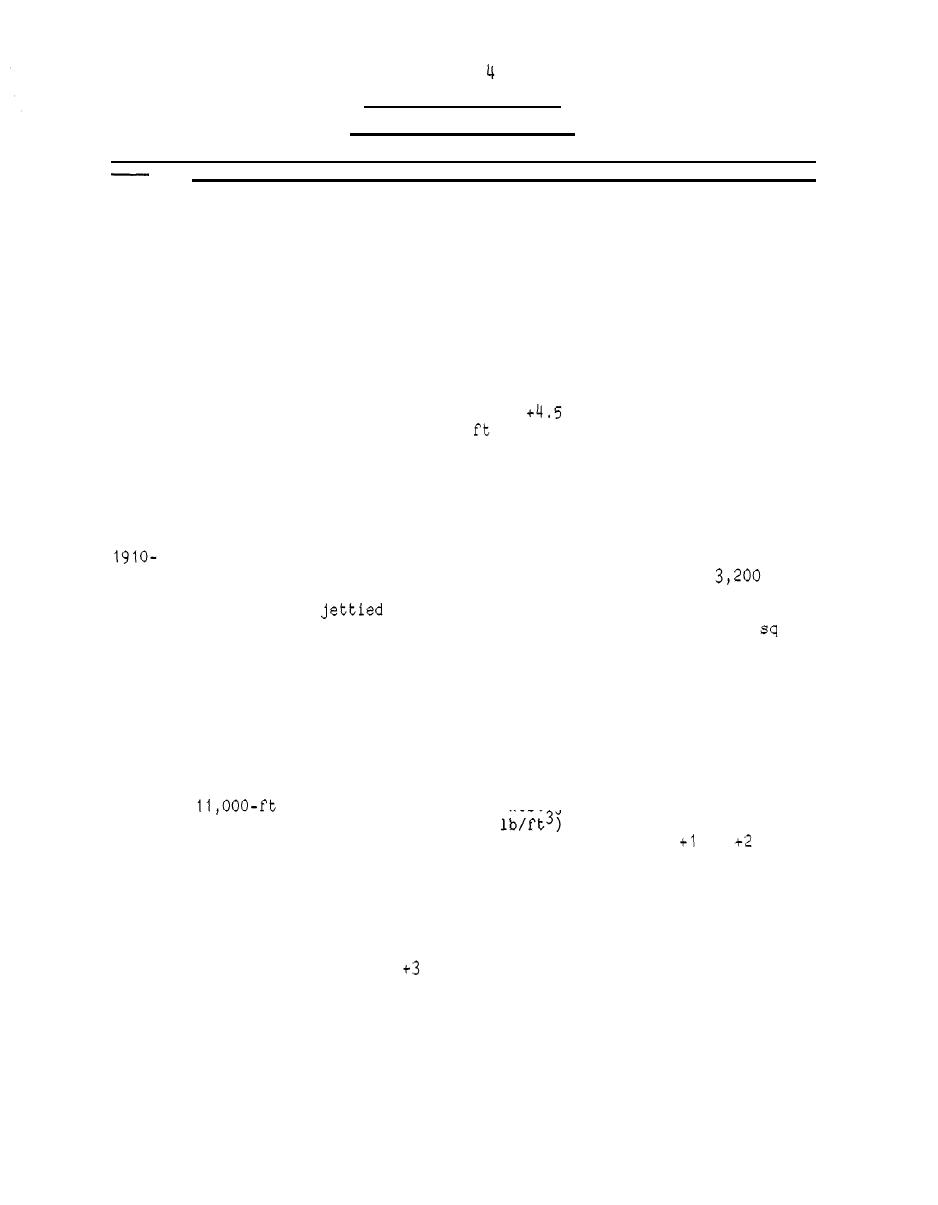
Table
Southwest Pass Jetties
Southwest Pass, Louisiana
Date
Construction and Rehabilitation History
1898-
In 1 9 a board appointed to report on improvement of Southwest Pass
88
1908
recommended construction of two jetties. A a result of successful
s
improvement of South Pass, commerce of the Port of New Orleans
rapidly increased and a deeper channel was desired to meet growing
demands of navigation. The act of 13 June 1902 approved construction
of the Southwest Pass jetties. Jetty construction was started in
1904 and completed in 1 0 . The jetties were built up using tiers of
98
fascine mattresses, each tier ballasted with stone and sunk.
Mattress widths varied from 35 to 150 ft. The wider mats were placed
on the bottom, and the number of tiers depended on the water depth.
The top tier was placed at about mlw, a 1- to 3-ft-thick layer of
riprap stone was placed to mhw, and a 12-ft-wide concrete cap was
cast in place to a finished grade of
mhw. The east and west
jetties were 21,000 and 15,000
long, respectively, and converged
from a distance of 6,000 ft apart to a distance of 3,600 ft (Fig-
ure 12, existing layout). The authorized channel was to have a depth
of 35 ft and a width of 1,000 ft. The total cost of construction was
,630,000using 1,086,000sq yd of mattress, 328,300 tons of stone,
and 44,500 cu yd of concrete.
The jetties were extended seaward -- the east jetty 2,900 ft and the
west jetty 3,400 ft. The seaward ends were approximately
ft
1912
apart. Spur dikes were constructed in the lower 7 miles of the pass,
including the
section, contracting the channel width to about
ft
3,000 ft. Materials used in the jetty extensions were 286,000
of mattress and 121,000 tons of stone. An additional 9,800 tons of
stone was used at the inner ends of the jetties. Total cost of the
extensions and repairs was 3,000.
1914-
The jetties and extensions as originally built had settled to the
1918
point that considerable amounts of water overflowed the concrete and
stone capping during high tide. To prevent this overflow, additional
stone was placed on the outer sections, and concrete capping was
placed along inner sections of the jetties. The outer 8,000- and
sections of the east and west jetties, respectively, had
75- to 2,000-lb marble stone (170
placed on the seaside of
the existing concrete cap. The stone was placed from
to
ft mhw
with 4- to 10-ft crown widths and natural side slopes. A total of
121,700 tons of stone was placed at a cost of 7,900. In 1916,
approximately 9,180- and 6,150-ft-long sections of the east and west
jetties, respectively, were capped with concrete. Except for 660 ft
of the east jetty, the new cap sections were placed landward of
ongoing stone repairs. The 3-ft-wide cap was placed on the existing
ft mhw. A total of 5,396 cu yd of concrete
cap to an elevation of
was used at a total cost of ,600.
(Continued)
25



 Previous Page
Previous Page
